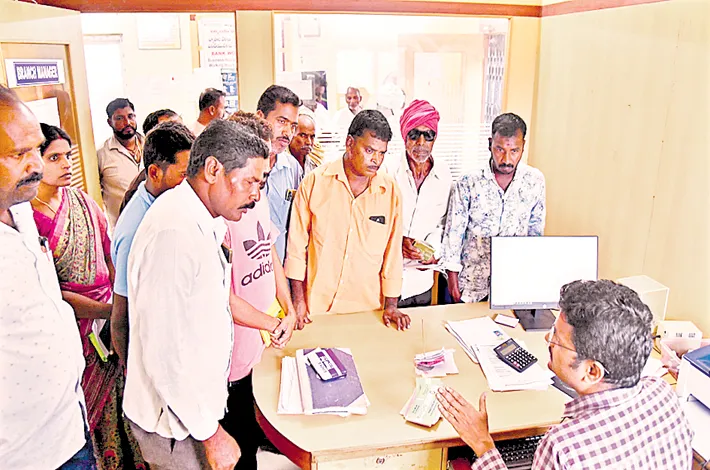Rythu Bharosa insufficient, ryots seek pvt loans for survival
27-10-2025 12:00:00 AM

Farmers in Telangana are increasingly resorting to private moneylenders for crop loans as banks continue to hesitate in providing agricultural credit. While banks readily finance ventures like tea stalls and tiffin centers, they remain reluctant to lend to Telangana’s farmers. According to RBI guidelines, banks are expected to allocate 18% of their loans to agriculture and 22% to allied sectors such as poultry, dairy, and agricultural machinery—collectively 40% for the farming ecosystem. State-level bank committees (SLBC) in Telangana set annual lending targets aligned with these norms.
Despite these directives, crop loan disbursements in Telangana have consistently fallen short—covering only 60–75% of the targets—with much of the reported disbursement being paper adjustments rather than real credits. Farmers and associations allege that banks make promises during SLBC meetings presided over by the Chief Minister or Finance Minister, but fail to follow through. Bankers perceive crop loans as risky, fearing defaults, and often prefer to lend to large farmers and corporates, leaving smallholders neglected.
Even the ‘Rythu Bharosa’ scheme provides insufficient funding. With banks reticent to lend, farmers are forced to turn to private lenders at exorbitant interest rates. Missed repayments on existing loans can mark small farmers as defaulters, pushing them deeper into debt with moneylenders. This debt burden has resulted in severe financial hardship and, tragically, suicides in some cases.
SLBC records indicate that the 2025 annual budget aims to disburse Rs. 7.65 lakh crore in loans across various sectors, with Rs. 1.87 lakh crore allocated for agriculture in Telangana. However, by June, only Rs. 41,051 crore (25%) had been disbursed. During the 2024 fiscal year, of the Rs. 64,940 crore target for agricultural loans, Telangana banks issued just Rs. 49,500 crore, falling short by Rs. 15,440 crore.
Banks cite high agricultural risk as a primary reason for limited lending. Unpredictable crop yields, along with challenges in selling produce due to irregular rains, floods, storms, or droughts, exacerbate farmers’ difficulties. Additional issues include problems with land ownership documentation, delays in land transfers, and insufficient field-level support stemming from staff shortages and poor loan-processing capacity. Government procurement often covers only select crops or faces delays, forcing farmers to sell at low prices to middlemen, further widening the gap between investment and returns.
Agricultural experts argue that if banks provided loans at reasonable interest rates, farmers’ investment costs would decrease, enabling them to earn higher profits and reducing their dependence on high-interest private lenders.








